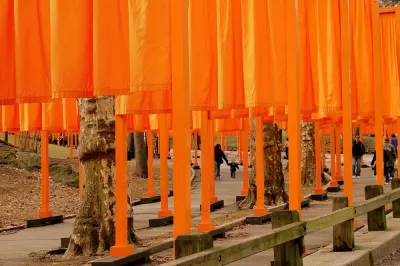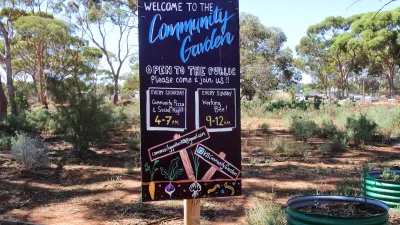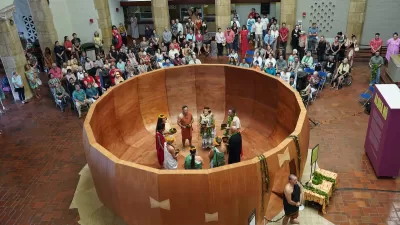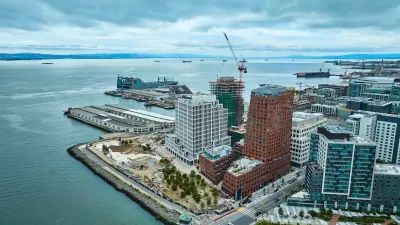Christo's site-specific artworks were known for their whimsy and playfulness. But the real beauty of his art lay in his ability to navigate local bureaucracies—and reveal how ridiculous they can be.

"Christo's pieces are no mere "public art," like the typical sculpture deposited arbitrarily in the plaza of an office building or the median of a boulevard (often paid for as penance by a developer). And they aren't just place-based. They are based in, and rely upon, specific places that are unique and irreplaceable. And they don't just occupy those places. They borrow those places. They use and transform them, and then they give them back."
"These are questions most artists (like most people) deliberately avoid. Art is the opposite of bureaucracy. Artists retreat to their studios to avoid tedious questions such as these. But Christo embraced the tedium. He met it head-on, and he figured out how to triumph over it (and even Triomphe over it). He did so because, in addition to clearly loving the sport of it, he knew that the result would be worthwhile."
FULL STORY: What Christo Taught Us About Land Use Policy

Planetizen Federal Action Tracker
A weekly monitor of how Trump’s orders and actions are impacting planners and planning in America.

Congressman Proposes Bill to Rename DC Metro “Trump Train”
The Make Autorail Great Again Act would withhold federal funding to the system until the Washington Metropolitan Area Transit Authority (WMATA), rebrands as the Washington Metropolitan Authority for Greater Access (WMAGA).

The Simple Legislative Tool Transforming Vacant Downtowns
In California, Michigan and Georgia, an easy win is bringing dollars — and delight — back to city centers.

The States Losing Rural Delivery Rooms at an Alarming Pace
In some states, as few as 9% of rural hospitals still deliver babies. As a result, rising pre-term births, no adequate pre-term care and "harrowing" close calls are a growing reality.

The Small South Asian Republic Going all in on EVs
Thanks to one simple policy change less than five years ago, 65% of new cars in this Himalayan country are now electric.

DC Backpedals on Bike Lane Protection, Swaps Barriers for Paint
Citing aesthetic concerns, the city is removing the concrete barriers and flexposts that once separated Arizona Avenue cyclists from motor vehicles.
Urban Design for Planners 1: Software Tools
This six-course series explores essential urban design concepts using open source software and equips planners with the tools they need to participate fully in the urban design process.
Planning for Universal Design
Learn the tools for implementing Universal Design in planning regulations.
Smith Gee Studio
City of Charlotte
City of Camden Redevelopment Agency
City of Astoria
Transportation Research & Education Center (TREC) at Portland State University
US High Speed Rail Association
City of Camden Redevelopment Agency
Municipality of Princeton (NJ)





























